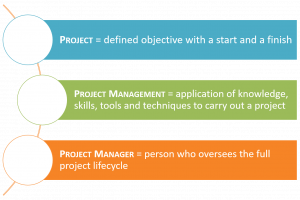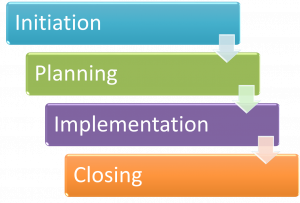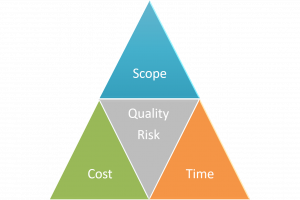Project Management Basics: Difference between revisions
Cristelags (talk | contribs) No edit summary |
Cristelags (talk | contribs) Added content |
||
| Line 1: | Line 1: | ||
This section reviews a few of the basic building blocks for the other sections of the toolkit. Please contribute additional project management fundamentals or other examples to the [[DLF Project Managers Toolkit]]. | This section reviews a few of the basic building blocks for the other sections of the toolkit. Please contribute additional project management fundamentals or other examples to the '''[[DLF Project Managers Toolkit]]'''. | ||
[[File:ProjectBasics.png|thumb|right]] | [[File:ProjectBasics.png|thumb|right]] | ||
| Line 29: | Line 29: | ||
Duration = (D(o) + 4D(r) + D(p)) / 6 | Duration = (D(o) + 4D(r) + D(p)) / 6 | ||
Critical to the success of any project is communication. Before beginning a project, consider the frequency (weekly, monthly, quarterly) and methods of communication (email, im, in-person; frequency of meeting). A communication plan should include the who, what, when, where, why & how. | Critical to the success of any project is communication. Before beginning a project, consider the frequency (weekly, monthly, quarterly) and methods of communication (email, im, in-person; frequency of meeting). A communication plan should include the who, what, when, where, why & how. See the '''[[Project Templates]]''' of the '''[[DLF Project Managers Toolkit]] | ||
''' for an example of a communication plan. | |||
== References == | == References == | ||
Project Management Institute. 2018. A guide to the project management body of knowledge: (PMBOK® guide). Newtown Square, Pennsylvania, USA: Project Management Institute. | Project Management Institute. 2018. A guide to the project management body of knowledge: (PMBOK® guide). Newtown Square, Pennsylvania, USA: Project Management Institute. | ||
Revision as of 11:38, 12 October 2018
This section reviews a few of the basic building blocks for the other sections of the toolkit. Please contribute additional project management fundamentals or other examples to the DLF Project Managers Toolkit.

A project must have a defined objective (product, service, result) with a start and a finish. Projects should not be confused with ongoing work.
Project Management is the application of knowledge, skills, tools and techniques to carry out a project.
A project manager oversees the project life cycle from planning, scheduling, executing, monitoring and controlling, and closing. There should only be one project manager in a project. Important characteristics for project managers are to be knowledgeable, performance-driven, and an effective communicator.

Project phases include initiation, planning, implementation, and closing.
There are different factors or constraints to monitor and control in a project. Commonly known as the triple constraint, the scope, time, and cost are managed and adjust in a project. Quality and risk should also be considered.

Project Management provides a framework and best practices for projects. Example: The following formula can be used to estimate the time of a task.
Three-Point Estimate
Determine: -optimistic value, D(o) -pessimistic value, D(p) -realistic value, D(r) Then: Duration = (D(o) + 4D(r) + D(p)) / 6
Critical to the success of any project is communication. Before beginning a project, consider the frequency (weekly, monthly, quarterly) and methods of communication (email, im, in-person; frequency of meeting). A communication plan should include the who, what, when, where, why & how. See the Project Templates of the DLF Project Managers Toolkit for an example of a communication plan.
References
Project Management Institute. 2018. A guide to the project management body of knowledge: (PMBOK® guide). Newtown Square, Pennsylvania, USA: Project Management Institute.

